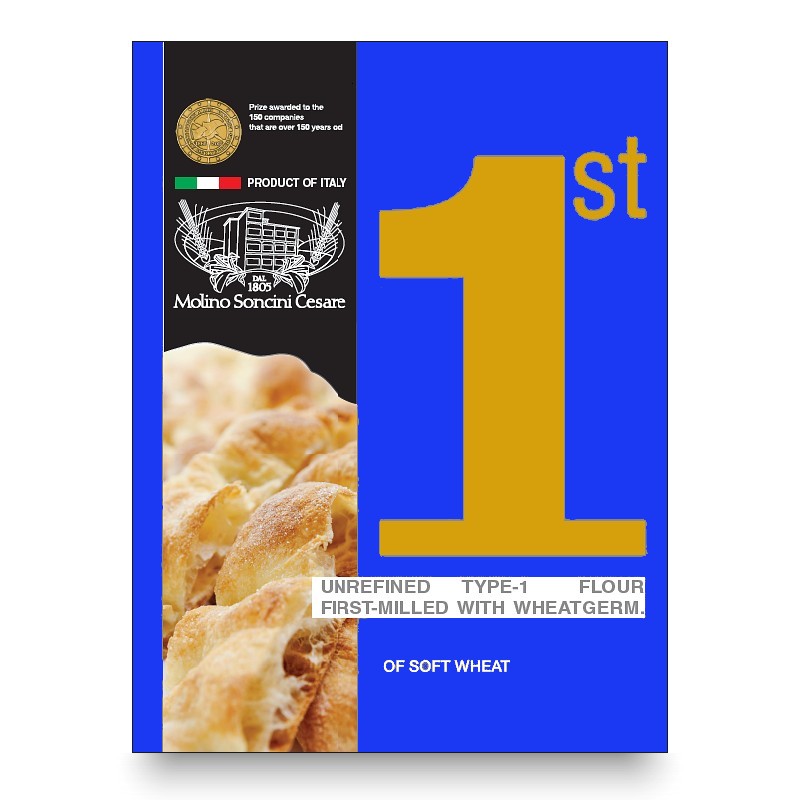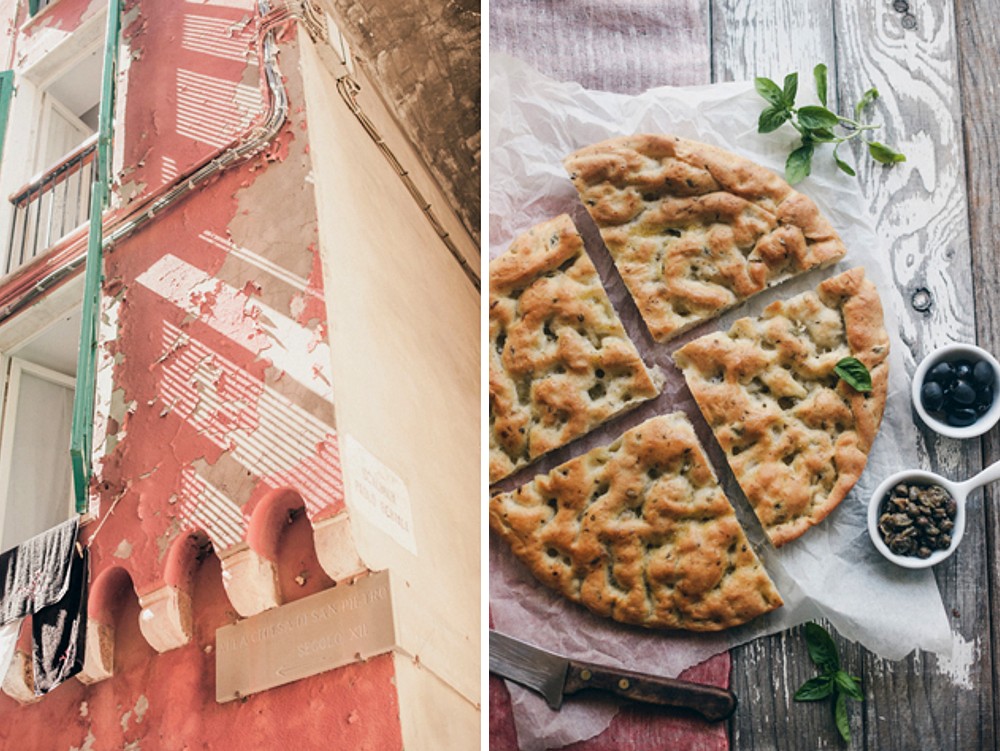type-1 First Strong Stone-milled flour (22-24 hours)

Suitable for making medium-sized loafs, maggiolini, rolls, ciabatta and Roman-type focaccia with long-proving times (22-24 hours).
I arrive from the sea, I have been on the sea, and now I am stood at the edge of the sea asking if I will ever get tired of it. So from the beach, here in Italy, I will tell about my trip. I am sure that I could continue this for ever, but instead I can now glimpse dry land, the end of my voyage, the time to return home. Summer is nearly over, but it doesn't seem as if anyone here has realised that fact yet. I met a boy who was coming back up towards the road after swimming in the sea, and I asked him if he had not already had enough of the water, after all the beach is here all each day, every day, all summer, every summer. He replied that a day without taking a dip is not a day well spent, and that summer in Liguria begins on 1 June and ends on 1 October. I makes me laugh to think how you could overlook the fact that a season has come to an end, it's like not noticing a letter from a woman who seems never to want to arrive. So I asked him what he would do if, for whatever reason, he had to live far from Liguria. I could not live away from here, he told me, there is absolutely no chance of that happening. He then directed me to a bar where you can find traditional focaccia typical of this area, and it rapidly became clear to me that this type of Ligurian bread also has a part to play in the culture the boy was trying to describe to me: there is no need to stop to eat it, you can enjoy it as you wander along the beach. It is no surprise that many writers and artists, having wandered the world, decided that this was the place to put down their roots. Maybe not permanently, but certainly long enough to allow them to show us the best of what they had to say, to paint, to tell. It would be beautiful if we were all as faithful and connected to something as the Ligurians are to their land. We would all be a little bit more poetic. Yours, as ever. L.

Genoese focaccia In a glass, melt the beer yeast in some tepid water. Place 200ml of water in a deep pot, and melt the malt. Add some salt to the aromatised Health Line flour, and place it together with the malt broth in the pasta maker: set at a low speed. After a few minutes working the paste, add the melted beer yeast and 30 grams of the olive oil. Work the mix together for another 10 minutes, then raise the speed setting, and add another 100ml of water. Continue to work the ingredients together until it all forms into a compact, light and smooth dough. Form it into a loaf shape, and leave it to rest on a floured surface, covered with a cloth, for around 15 minutes. Fold the dough two or four times to make it more elastic, and then place it in an oiled oven tray. Leave it to rise for around an hour at a stable temperature (inside the switched-off oven, for instance). Once it has risen, work it with your hands, using all ten fingers, pressing down it as much as possible into all the corners of the tray: by now, the dough will be quite thin. Leave it to rise for another hour, and then scatter a little white flour on top. Now you can start to make the holes in the dough that typify Genoese focaccia. Use all the fingers on both hands to make little holes to a depth of halfway down into the dough, maybe apart 1-1.5cm apart, working with both hands simultaneously from one side of the dough to the other. Now we can prepare the marinade: use a whisk to mix together 100 ml of water, and the remaining 50 grams of olive oil. Now pour the marinade over the dough, but don't worry if there seems to be too much. Just make sure that all the holes made previously are filled, and then sprinkle whatever quantity of rock salt you want on top. Leave it to rest for another hour, and then bake it in a pre-heated oven at 230°C for 15-20 minutes. Once the focaccia is nicely browned and seems crunchy on top, remove it from the oven and serve while still hot.

Genoese focaccia is also known as "fugàssa": it is one of the most typical and popular culinary dishes from Liguria. It is a flat, quite thin and crunchy dish, which has an intense aroma of olive oil, with certain unmistakable characteristics that render it unique: it is slightly greasy on top, salted and has many tiny "eyes", the name given to the small holes in the surface that capture both the olive oil and the various flavours. In Liguria, it is eaten at breakfast, steeped in warm coffee and milk, or as a snack; it is also popular as an aperitif served with white wine, but also simply as something to eat as you walk along the Ligurian coast-line. It can be used as a substitute for bread at either dinner or lunch. There are many different variants of this recipe: in some versions, it is filled with onions, an ancient and very common recipe in Genoa, and the typical food of the labourers on the city's port (known as the "camalli"), since it would satisfy the appetite and also provide energy for the long day's work ahead. But there are also versions made with olives, sage, rosemary, cherry tomatoes, or with a a cheese and potato mix that is added to the dough before baking. Genoese focaccia generally comes in "slerfa", a size of about 200 grams each, just the right quantity to start the day right and get your fingers slightly greasy!